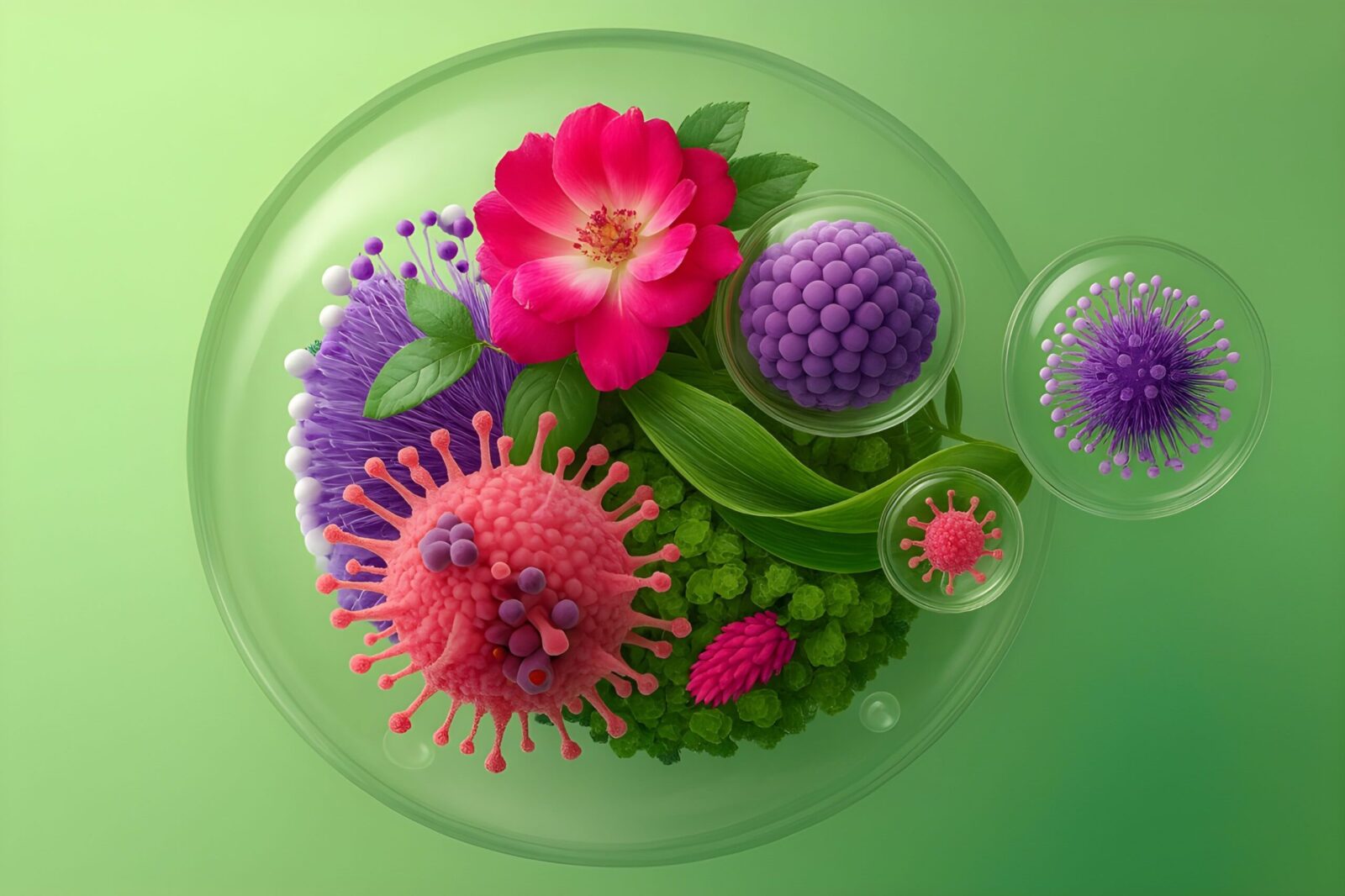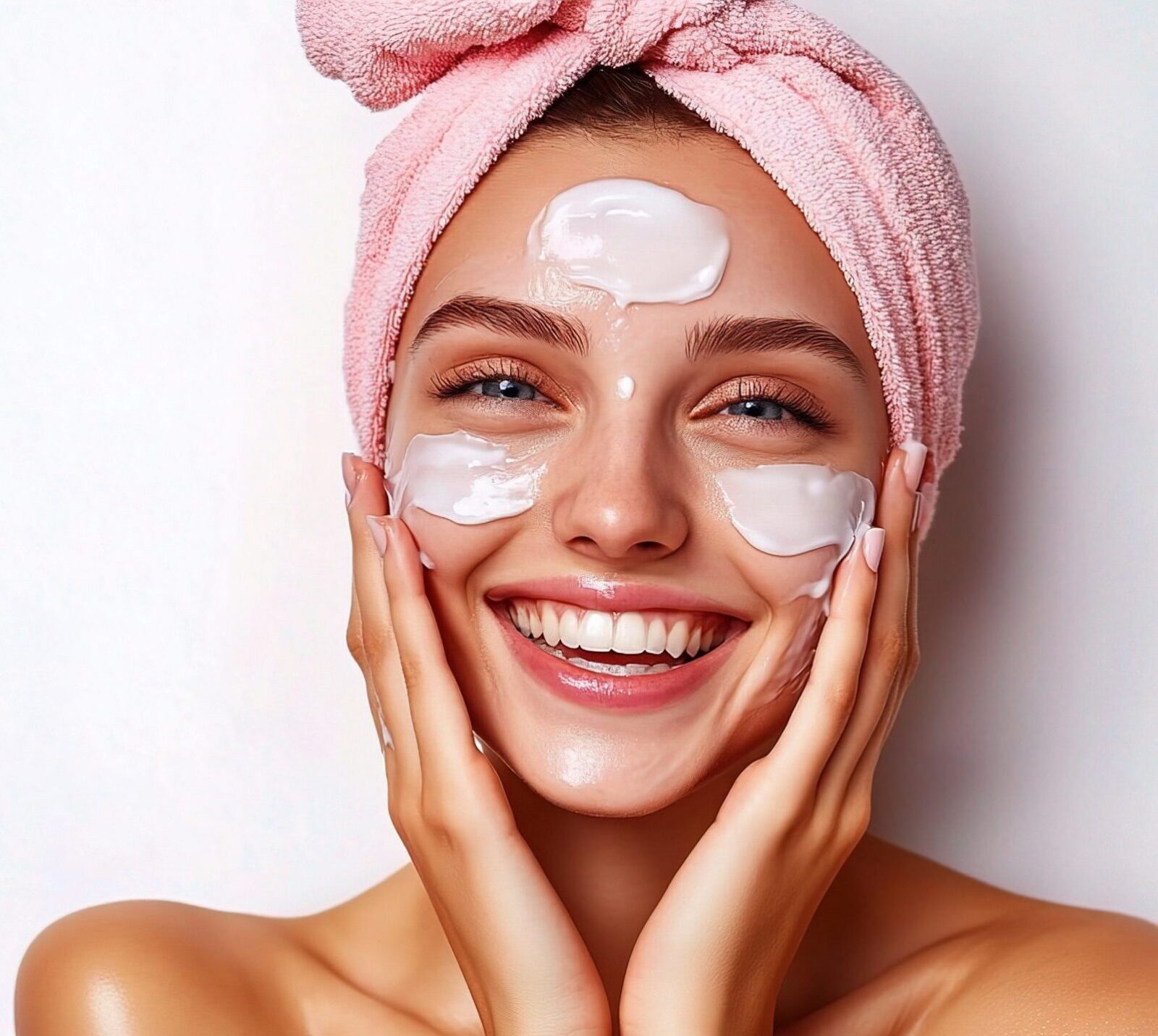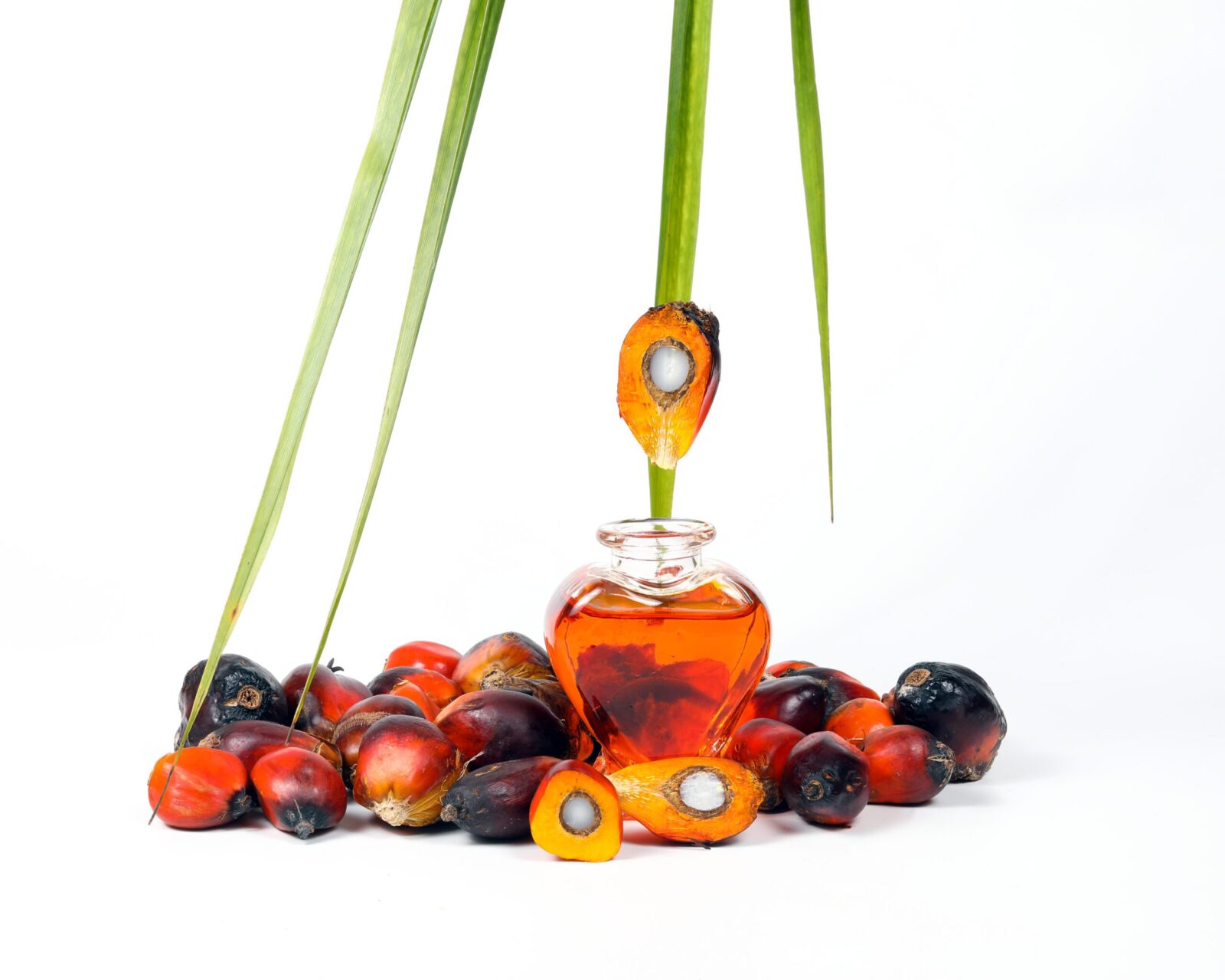Oleic acid, frequently acting as an unsung hero in preserving healthy and bright skin, is a crucial component of many skincare products and natural oils. This monounsaturated omega-9 fatty acid is beneficial for the health of the skin and can be obtained from a variety of plant and animal sources. Here are some reasons why oleic acid is a good addition to your skincare routine: It moisturises, softens, and smooths skin, has anti-inflammatory characteristics, is an antioxidant, improves penetration, treats acne, and lessens scars and stretch marks. Olive oil, avocado oil, almond oil, and various animal fats are typical sources of oleic acid used in skincare products. It’s crucial to take your skin type into account when adding oleic acid-containing products to your skincare regimen. While oleic acid has several advantages for dry, aged skin, those with oily or acne-prone skin may want to use caution and choose products with a well-balanced fatty acid composition. When experimenting with new skincare products, it is advisable to conduct a patch test to confirm that the ingredients are safe for your skin and won’t have any negative effects. Consulting a dermatologist or skincare expert can also offer tailored advice on how to incorporate oleic acid into your skincare routine for the best outcomes.
The Skin’s Mystical Ecosystem: A Realm of Balance and Beauty
The skin serves as the body’s physical defence against the outer environment and is a remarkable and complicated organ. The largest organ in the body, it functions as a dynamic ecosystem that is constantly changing and where maintaining balance is essential to obtaining beauty, health, and general well-being. Let’s investigate the mysterious skin ecosystem and how it preserves harmony and beauty:
- Barrier Function: As a barrier, the skin’s main job is to shield the body from potentially hazardous outside influences such as UV radiation, pollution, infections, and dehydration. For healthy and beautiful skin, a barrier that is kept in good condition is necessary.
- Microbiome Harmony: The term skin microbiome refers to the diverse community of bacteria that live on the skin. These bacteria, fungus, and other microorganisms are essential for preserving the balance and health of the skin. Acne, eczema, and psoriasis can be prevented when the microbiota is balanced.
- Moisture Balance: Healthy hydration is essential for glowing skin. Disruptions to the skin’s delicate moisture balance can cause dryness or overly oily skin. The control of sebum production and the skin’s capacity for water retention help to maintain this equilibrium.
- Renewal and Regeneration: The skin is constantly regenerating and renewing itself. New skin cells are produced as the old ones are shed. This procedure maintains the skin’s youthful appearance. However, this process can slow down as we age, producing aging symptoms.
- Collagen and Elasticity: The proteins collagen and elastin give the skin its flexibility and strength. To avoid wrinkles and sagging, the skin must be able to maintain these proteins.
- Inflammation Control: A natural reaction to damage or irritation is inflammation, but persistent inflammation can be bad for the skin. Skin diseases linked to chronic inflammation can be avoided and controlled by maintaining a healthy skin ecology.
- Nutrient Supply: For the skin to work at its best, it needs a consistent flow of nutrients. This comprises antioxidants, vitamins, and minerals that support the healing of damage and preserve a youthful appearance.
- Emotional Well-Being: In addition to being a physical organ, the skin affects our emotional health. A glowing complexion can improve mental and emotional well-being.
Holistic thinking is frequently necessary to maintain equilibrium in the mystical environment of the skin. This includes maintaining a balanced diet, getting enough water, protecting yourself from the sun, washing your skin frequently, and using skincare products that are suitable for your skin type and issues. Managing stress, getting adequate sleep, and abstaining from bad habits like smoking can also have a big impact on the health and appearance of your skin. It’s crucial to remember that because skin types and concerns differ greatly, what works for one person’s skin may not work for another. Getting personalised advice and treatments from a dermatologist or skincare expert can help you attain and maintain harmony and beauty within the particular ecology of your skin. In the end, nourishing the ethereal realm of your skin is a journey that blends science, self-care, and a dash of magic.
The Intricate Dynamics of the Skin Microbiome
The trillions of bacteria that dwell on the surface of our skin make up the interesting and complicated ecosystem known as the skin microbiome. These microbes include viruses, mites, fungus, and bacteria. The complex interactions of the skin microbiome are vital for maintaining skin health and can have an effect on a number of different elements of human well-being. A closer look into this complex environment is provided here:
- Diversity: The skin microbiome, like the gut microbiome, is diverse and highly individualised. Factors such as genetics, age, environment, and lifestyle can all have an impact on the composition of the skin microbiome. A diverse microbiome is linked to healthier skin.
- Protective Barrier: The skin microbiome acts as a protective barrier, competing for space and nutrients on the skin’s surface with harmful pathogens. Beneficial microorganisms keep harmful microorganisms from colonising the skin and causing infections or inflammation.
- Acid Mantle: The skin has a slightly acidic pH, known as the “acid mantle,” which is maintained by the skin microbiome. The acidic environment encourages the growth of beneficial bacteria while suppressing the growth of potentially harmful bacteria.
- Immune System Support: The skin microbiome interacts with the immune system. It can assist in educating the immune system to recognise and respond appropriately to potential threats, lowering the risk of overreacting and causing skin conditions such as eczema.
- Skin Conditions: Imbalances in the skin microbiome have been linked to a variety of skin conditions. Acne, eczema, psoriasis, and rosacea, for example, have been linked to changes in the composition and diversity of the skin microbiome.
- Skin Ageing: Recent research suggests that the skin microbiome may play a role in skin aging. A balanced microbiome may help with skin firmness and elasticity, whereas imbalances may cause premature aging signs.
- Environmental Factors: Climate, humidity, and pollution can all have an impact on the skin microbiome. Environmental changes can alter the types of microorganisms found on the skin’s surface.
- Personal Care Products: Personal care products such as soaps, cleansers, and moisturisers can have an impact on the skin microbiome. Some products may disrupt the microbiome, whereas others are intended to keep it in balance.
- Microbial Therapies: New research is looking into the potential of microbial therapies like probiotics and prebiotics to promote a healthy skin microbiome and treat a variety of skin conditions. These treatments are intended to introduce or feed beneficial microorganisms to the skin.
Maintaining a healthy and balanced skin microbiome is critical for overall skin health. Here are some practises to promote a healthy skin microbiome:
- Gentle Cleansing: Avoid using too many harsh soaps and cleansers, which can kill beneficial microorganisms.
- Moisturise: By maintaining the skin’s barrier function, properly moisturised skcleansers,can support a healthy microbiome.
- Avoid Excessive Antibiotic Use: Excessive antibiotic use can disrupt the skin microbiome. Use antibiotics only if a doctor has prescribed them.
- Sun protection: UV rays can change the microbiome of the skin. Apply sunscreen to your skin to protect it from sun damage.
- Diet and Lifestyle: Eating a well-balanced diet high in fibre and nutrients can help the skin microbiome indirectly. Managing stress and getting enough sleep also help with overall skin health.
A developing field of study in dermatology and skincare is the complicated dynamics of the skin microbiota and how to support them. We can anticipate increasingly specialised and personalised skincare methods that consider the skin’s microbiota as our knowledge grows.
How Microbial Life Shapes Our Skin’s Radiance
Microbial life has a significant impact on the lustre and overall health of our skin. The interaction of the skin with its resident microbiota, or skin microbiome, influences a variety of elements that affect the appearance and vibrancy of the skin. The following is how microbial activity affects skin brightness:
- Skin Barrier Maintenance: The skin microbiome helps to maintain the skin’s barrier function. This defence keeps harmful germs at bay while also minimising water loss, keeping the skin moisturised. The skin appears smoother, plumper, and more luminous when the barrier is maintained.
- pH Regulation: The skin has a slightly acidic pH (around 4-5), and the skin microbiome helps to regulate this acidity. Healthy skin requires a pH balance. The skin appears more radiant and is better able to defend against infections and environmental stressors when its pH is within the optimal range.
- Anti-Inflammatory Effects: A healthy skin microbiome can aid in the reduction of inflammation on the skin’s surface. Inflammation can cause flushing, irritation, and a dull complexion. Beneficial microorganisms in the skin microbiome can modulate the immune response of the skin, resulting in a more radiant appearance.
- Skin Disorder Prevention: Imbalances in the skin microbiome have been linked to a variety of skin conditions, including acne, eczema, and psoriasis, all of which can impair skin radiance. A diverse and healthy microbiome can aid in the prevention or treatment of these conditions.
- Beneficial Compound Production: Some microorganisms in the skin microbiome produce beneficial compounds such as vitamins and fatty acids. Certain bacteria, for example, can produce short-chain fatty acids that nourish the skin, improving its radiance and overall health.
- Collagen and Elastin Preservation: A well-balanced microbiome may aid in the preservation of collagen and elastin, proteins that provide elasticity and firmness to the skin. The breakdown of these proteins can cause sagging and a loss of radiance.
- UV Protection: Some research suggests that the skin microbiome may provide some UV radiation protection. UV rays are a major cause of premature skin aging and can cause a dull complexion.
- Influence on Skin Moisture: Microbial metabolites and the skin’s microbiome can have an impact on the skin’s moisture content. Skin that is well-moisturized appears more radiant and youthful.
It’s important to keep in mind that the skin microbiota is extremely individualised, so what works for one person might not work for another. Consulting a dermatologist or skincare expert can offer customised advice on skincare practises and products designed to meet the specific demands of your skin and increase its shine.
The Delicate Dance: Skin Health vs. Microbial Balance
The complex interplay between skin health and microbial balance has a substantial impact on our skin’s general health and look. Harmonising these two elements is crucial for preserving beautiful, healthy skin. Let’s investigate this complex connection:
Skin Health:
- The skin functions as a barrier against external threats such as bacteria, viruses, and environmental toxins. A healthy skin barrier is essential for overall skin health.
- Balanced moisture levels are essential for healthy skin. A healthy balance of moisture levels keeps the skin from drying out and encourages a plump, youthful appearance.
- Collagen and elastin provide the skin with strength and elasticity. Preserving these proteins is essential for preventing sagging and wrinkles.
- To maintain healthy skin, inflammation must be under control. Chronic inflammation can cause a number of skin conditions and degrade the appearance of the skin.
- Skin renewal occurs when the skin sheds old cells and renews itself. This procedure contributes to a more youthful and radiant complexion.
Microbial Balance:
- The skin microbiome is a diverse community of microorganisms found on the skin. This microbiome benefits skin health in a variety of ways.
- Beneficial microorganisms in the skin microbiome help to maintain the skin’s barrier function, preventing harmful pathogens from colonising.
- Skin pH regulation is important for maintaining the health and radiance of the skin. The skin microbiome plays a role in this process.
- A healthy skin microbiome can reduce inflammation and irritation, which helps promote a more even and radiant complexion.
- Imbalances in the skin microbiome can contribute to skin conditions such as acne, eczema, and rosacea. A diverse microbiome can aid in the prevention or treatment of these issues.
Microbial balance and skin health:
- Avoid over-cleansing or using harsh products that might disturb the skin’s microbiome. Choose gentle cleansers that keep the pH of the skin stable.
- A healthy microbiome and barrier function is supported by properly moisturised skin.
- Eating a nutrient-dense diet and leading a healthy lifestyle can help to support both skin health and microbial balance.
- Protect your skin from UV rays, which can harm both the skin and its microbiome.
- Individual variations in skin type and microbiome composition mean that what works for one person may not work for another. For personalised advice, consult a dermatologist or skincare professional.
It takes time to achieve the delicate equilibrium between microbial balance and skin health. It frequently entails a blend of suitable skincare techniques, a healthy lifestyle, and a dedication to comprehending what your particular skin wants. In the end, this balance maintains the skin’s general health while producing a vibrant and beautiful complexion.
Navigating the World of Fatty Acids: Oleic Acid at the Forefront
Understanding how fatty acids work, especially oleic acid, will help us better understand their importance for nutrition, health, and attractiveness. Finding your way around the world of fatty acids might be difficult. Oleic acid, an omega-9 monounsaturated fatty acid, is well known for its numerous benefits and uses. Let’s look more closely at oleic acid and its importance:
- Chemical Structure and Sources: Oleic acid, abbreviated C18:1, is a long-chain fatty acid with 18 carbon atoms. It has one monounsaturated double bond, which is situated at the ninth carbon from the methyl (CH3) end. Oleic acid is frequently found in foods such as nuts, seeds, olive oil, avocado oil, and some animal fats.
- Nutritional Significance: A balanced diet can include oleic acid, a healthy dietary fat. It is the main fatty acid found in olive oil, which is frequently linked to the Mediterranean diet because of its beneficial effects on health. By enhancing lipid profiles, lowering inflammation, and supporting healthy blood vessels, oleic acid intake may help lower the risk of heart disease.
- Skincare Benefits: Numerous natural oils and skincare products contain oleic acid as a crucial ingredient. It benefits dry or dehydrated skin because it has moisturising qualities. Because of its emollient properties, which soften and smooth the skin’s surface, skin texture and radiance are improved. Oleic acid is suitable for calming irritated or inflamed skin because it may also have anti-inflammatory properties.
- Omega-9 Fatty Acids: Oleic acid and other omega-9 fatty acids are categorised as monounsaturated fats. They are distinct from polyunsaturated fats like omega-3 and omega-6. While the body can synthesise omega-9 fatty acids, including oleic acid, when needed, omega-3 and omega-6 fatty acids must be acquired through diet.
- Cooking and Culinary Use: Oleic acid-rich olive oil is a preferred cooking oil. Due to its high smoke point, it can be used in a variety of culinary applications. Olive oil’s moderate flavor and stability are both influenced by oleic acid.
- Skin Penetration Enhancement: It is well known that oleic acid can increase the penetration of other skincare products. It can assist in delivering active ingredients deeper into the skin when utilised in formulations.
- Considerations: Oleic acid has several advantages, however, not everyone finds it suitable for skincare. Products high in oleic acid may not be as good for people with oily or acne-prone skin because they may, in some situations, make acne worse.Understanding the nutritional, cosmetic, and gastronomic relevance of fatty acids, especially oleic acid, is essential for navigating the world of fatty acids. You may maximise the advantages of this fatty acid for health and skincare by including foods high in oleic acid in your diet and selecting skincare products that are suitable for your skin type. Always get individualised advice from a dermatologist or healthcare provider based on your unique needs and preferences.
Traditional Roots: Oleic Acid’s Place in Ancient Beauty
Oleic acid has been used in skincare and beauty products for centuries. This use can be attributed to numerous cultures that understood the advantages of using natural oils high in this fatty acid. Oleic acid-containing oils have long been appreciated for their healing and beauty abilities throughout a variety of civilizations and geographical areas. Here is a sample of how oleic acid has historically been used in traditional beauty:
- Ancient Egypt: Advanced beauty procedures were a specialty of the ancient Egyptians. A vital component of their skincare was olive oil, which is a strong source of oleic acid. Olive oil was used to moisturise the skin, protect it from the harsh desert sun, and keep it looking young.
- Ancient Greece: Olive oil was widely used in both cosmetic and culinary applications in ancient Greece. Before tournaments, athletes applied it to their skin and used it. Hippocrates, a Greek physician who is regarded as the founder of modern medicine, acknowledged the advantages of olive oil for health and advocated using it for its nourishing qualities.
- Ancient Rome: Similar to Greek women, Roman ladies used olive oil to hydrate and safeguard their skin. After bathing, people frequently apply olive oil to retain moisture. Roman bathhouses used olive oil in bathing routines, emphasising the substance’s value in skincare.
- Traditional Ayurveda: Natural oils have long been recommended for use in massage and skincare treatments by the traditional Indian medical system known as Ayurveda. As one of the favored oils in Ayurvedic beauty treatments, sesame oil was chosen because of its oleic acid content. It was thought to hydrate and refresh the skin.
- Middle Eastern Traditions: Olive oil was a staple of skin and hair care in Middle Eastern cultures, especially in areas where olive trees flourished in profusion. It was applied to the skin to wash, moisturise, and defend against the harsh desert environment.
- Indigenous Practices: Indigenous populations all across the world have used oleic acid-rich native oils for cosmetics and healing. For instance, the Berber people of Morocco have used argan oil, which possesses oleic acid, for millennia because of its moisturising and rejuvenating qualities.
Based on the finding that they had positive effects on the skin, oleic acid-rich oils were used in traditional beauty procedures. These oils hydrated the skin, shielded it from the weather, and helped keep it soft and radiant. To make other beauty remedies, they were frequently mixed with other organic substances and herbs. The custom of utilising oleic acid-rich oils in skincare is still practised today, with essential components of contemporary beauty products including olive oil, argan oil, avocado oil, and others. It is obvious that this traditional beauty trick still has value in modern skincare regimens as science continues to elucidate the precise advantages of oleic acid for the skin.
The Science of Softness: How Oleic Acid Hydrates and Heals
Oleic acid, a monounsaturated omega-9 fatty acid included in many natural oils, is crucial for moisturising and repairing the skin. Due to its special qualities, it is a valuable component of skincare products and a safe, all-natural way to encourage smooth, supple, and healthy skin. According to scientific findings, oleic acid helps the skin repair and stay hydrated in the following ways:
- Emollient Properties: Oleic acid works well as an emollient because it can smooth and soften the skin’s surface. Oleic acid reduces transepidermal water loss (TEWL) by creating a protective film on the skin when administered topically. This contributes to a smoother and more supple complexion by keeping skin hydrated and helping to seal in moisture.
- Skin Barrier Support: The role of the skin’s barrier is essential for retaining moisture and fending off outside threats. Oleic acid helps to strengthen this barrier. By strengthening the skin’s lipid barrier, oleic acid promotes a balanced environment that is better able to retain moisture, resulting in greater softness.
- Anti-Inflammatory Effects: Oleic acid may have anti-inflammatory properties, according to research. Redness, irritation, and discomfort can result from inflammation, which can thwart the skin’s normal healing processes. The anti-inflammatory properties of oleic acid can aid in calming and soothing the skin and facilitating healing.
- Wound Healing: Oleic acid may help in tissue repair and wound healing, according to studies. Oleic acid can aid in the development of new blood vessels and the migration of skin cells to the wounded area, speeding up the healing process when applied to wounds.
- Penetration Enhancement: Other skincare products are proven to penetrate more effectively when oleic acid is present. When coupled with active ingredients, it improves their ability to penetrate the skin, enabling improved absorption and increased efficacy.
- Skin Conditioning: Moisturisers and serums frequently contain oleic acid as a component to condition the skin. For treating dryness and preserving a healthy skin texture, its capacity to hydrate and soften the skin makes it useful.
- Anti-Aging Benefits: Skin that is properly hydrated appears more vibrant and youthful. The moisturising effects of oleic acid lead to a plump and smooth face, possibly lessening the visibility of fine lines and wrinkles.
- Personalized Skincare: Oleic acid is generally helpful for moisturising and repairing the skin, however, oleic acid compatibility varies from person to person. Products with higher oleic acid concentrations may be effective for some people’s skin, while others with oily or acne-prone skin may prefer products with a different ratio of fatty acids.
Both conventional use and academic research support oleic acid’s role in skin hydration and wound healing. It can help promote softer, more moisturised, and healthier skin when used as part of a skincare regimen. Individual skin types and sensitivities should be taken into account, as with any skincare product or component, and it’s recommended to carry out a patch test when testing new products. A dermatologist or other skincare expert can offer you specialised advice on how to use oleic acid to treat your particular skin issues.
Interplay with Other Ingredients: Oleic Acid’s Compatibility
Oleic acid interacts with other chemicals in your skincare regimen because it is a vital component of many skincare products and natural oils. It is crucial to take into account the compatibility of oleic acid with other substances to make sure that your skincare products function properly and do not have negative side effects. Here is a closer look at how oleic acid works with various components used in skincare:
- Oleic Acid and Hyaluronic Acid: Hyaluronic acid is a moisturising substance that is well-known for drawing and holding moisture to the skin. Hyaluronic acid and oleic acid can work effectively together in a skincare regimen. While hyaluronic acid increases and maintains hydration in the skin, oleic acid acts as a barrier to help keep moisture in.
- Antioxidants (such as Vitamin C) and Oleic Acid: Vitamin C and other antioxidants protect the skin from oxidative damage caused by free radicals. Oleic acid can aid in the penetration of antioxidants into the skin, potentially increasing their ability to combat free radicals and promote a more youthful appearance.
- Oleic Acid and Alpha Hydroxy Acids (AHAs): Glycolic acid and lactic acid are two AHAs that are frequently used for exfoliation and skin rejuvenation. Oleic acid improves the penetration of AHAs, increasing their effectiveness in removing dead skin cells and improving skin texture. For sensitive skin, this combination could be extremely powerful and should be used with caution.
- Oleic Acid and Niacinamide (Vitamin B3): The skin barrier-strengthening and anti-inflammatory effects of niacinamide are well established. Niacinamide and oleic acid can complement each other’s effects on barrier strength. They can all work together to lessen irritation, preserve moisture, and enhance skin texture.
- Oleic Acid and Retinoids (e.g., Retinol): Retinoids are potent anti-aging agents that can smooth out wrinkles and fine lines while also minimising skin imperfections. By acting as a moisturising barrier, oleic acid can help reduce some of the potential drying and irritant effects of retinoids. Use this combo cautiously, especially if you have sensitive skin or acne-prone skin.
- Oleic Acid and Salicylic Acid (Beta Hydroxy Acid, BHA): Due to its capacity to exfoliate and unclog pores, salicylic acid is a common ingredient in acne-treating products. Oleic acid’s emollient qualities might counteract some of the drying effects that salicylic acid might have, but it’s important to pay attention to how your skin reacts because it might not be good for everyone.
- Oleic Acid and Sunscreen: Oleic acid can increase spreadability and hydration in sunscreens. Make sure the oleic acid-containing sunscreen formulation shields your skin from UV rays well and doesn’t irritate it or lead to skin eruptions.
Combinations of skincare ingredients must be chosen carefully, taking into account the specific requirements of your skin. Oleic acid can improve some substances’ penetration, but it may not be right for all skin types, particularly if you have oily or acne-prone skin. Consult a dermatologist or skincare expert if you have questions regarding the interactions between components or are having skin problems for individualised advice and product suggestions catered to your unique needs.
Advancing Skincare Horizons with Oleic Acid
Because of its numerous uses and potential advantages for the skin, oleic acid has been at the forefront of expanding the boundaries of skincare. Its use in skincare products and studies has made it possible to manage a variety of skin issues and improve overall skin health. The following are some ways that oleic acid is advancing skin care:
- Hydration and Moisturization: Oleic acid is a superior moisturising agent because of its emollient qualities. It aids in creating a shield on the skin’s surface, stopping water loss, and preserving skin moisture. People with dry or dehydrated skin would particularly benefit from this.
- Skin Barrier Enhancement: For overall skin health, it’s critical to maintain a good skin barrier. Oleic acid helps to strengthen the lipid barrier of the skin, increase its resistance to external aggressors, and lower the likelihood of irritation and sensitivity.
- Penetration Enhancement: It is well known that oleic acid can increase the penetration of other skincare products. When coupled with active ingredients, it maximises their medicinal effects by assisting with skin penetration.
- Anti-Inflammatory Properties: Oleic acid may have anti-inflammatory qualities, which can help calm and soothe irritated or inflamed skin, according to scientific research. This makes it a crucial component in goods intended to treat ailments like rosacea and eczema.
- Anti-Aging Benefits: Skin that is properly hydrated and moisturised appears more vibrant and young. The moisturising effects of oleic acid may help promote plump and smooth skin and may lessen the visibility of fine lines and wrinkles.
- Natural Ingredient Focus: Oleic acid, which is produced from sources like olive oil and avocado oil, fits nicely with the trend of employing plant-based compounds in skincare as customers look for natural and organic skincare choices.
- Personalised Skincare: Because of its adaptability, oleic acid can be found in a variety of skincare products, from cleansers and masks to moisturisers and serums. Due to this adaptability, people can customise their skincare regimens to suit their unique skin types and issues.
- Advancements in Formulations: The ongoing investigation into how oleic acid interacts with other substances in cosmetics has produced novel formulations that maximise its advantages while minimising any potential downsides.
- Clinical Applications: Clinical uses of oleic acid, particularly in dermatology, are gaining attention due to its potential for wound healing. Researchers are investigating how it can help with tissue regeneration and wound healing.
- Sustainability and Sourcing: The use of oleic acid from sustainable and ethical sources is consistent with these principles, which are valued more and more in the skincare sector.
Oleic acid research is ongoing, new formulations are being developed, and there is a comprehensive understanding of how it interacts with other skincare chemicals. While oleic acid has several advantages, it’s important to take into account each person’s skin type and sensitivity when including it in skincare routines. Making the most of oleic acid’s potential in your skincare routine might be facilitated by seeking the advice of a dermatologist or skincare specialist.


















